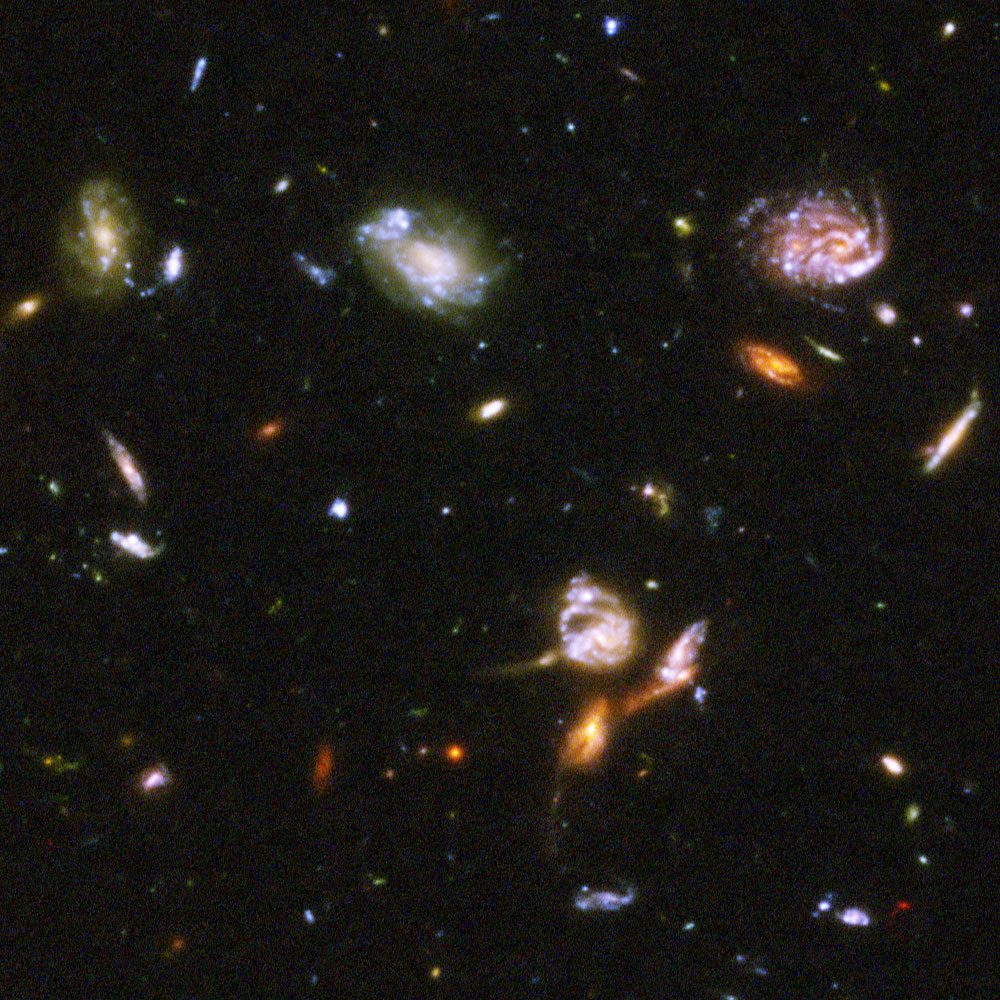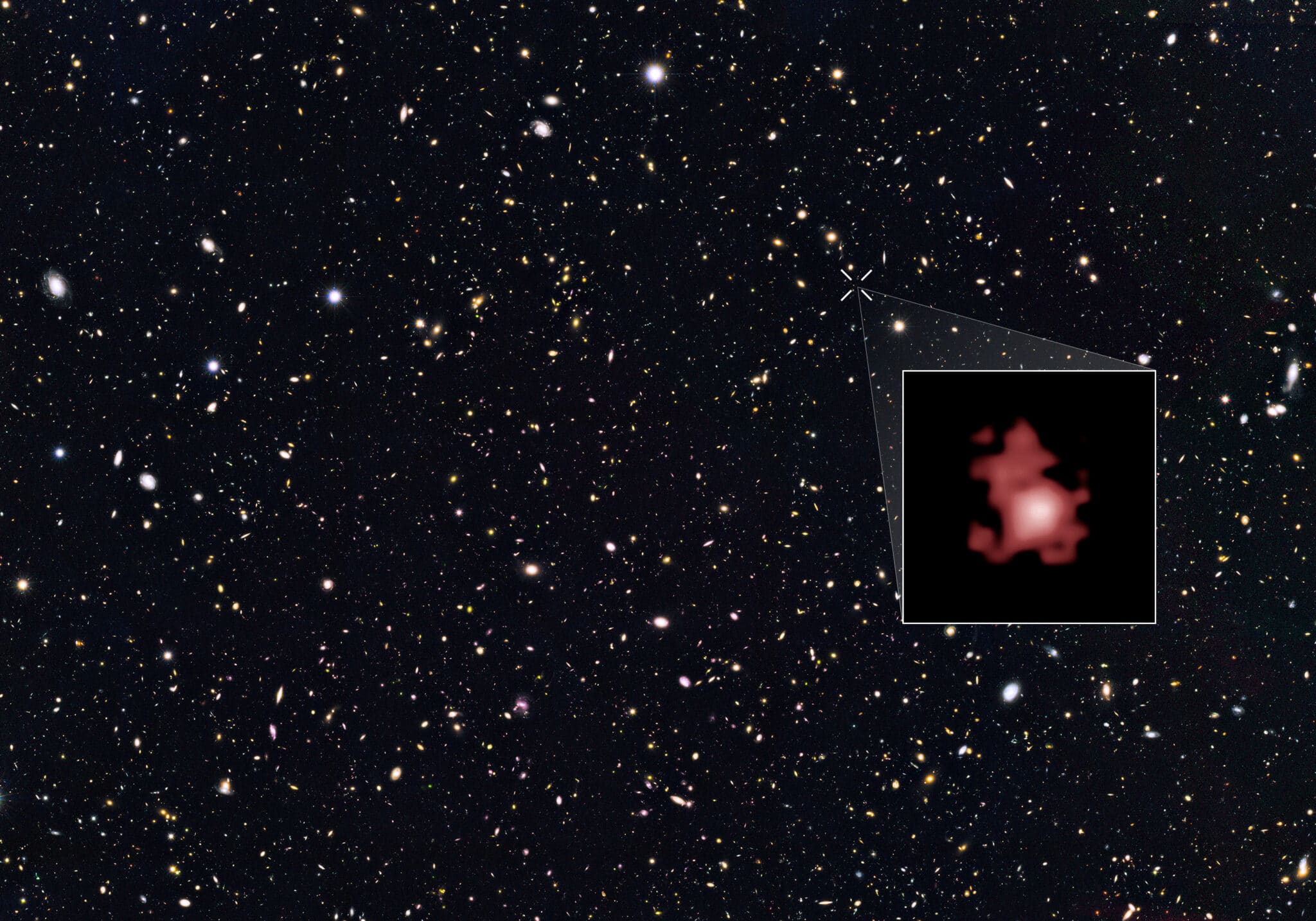
Thanks to the Hubble Space Telescope, we know more about the baby years of our universe. Over the past decades, the space telescope has taken several Deep Field photos: extremely long-exposed images of small pieces of the sky. The photos show galaxies up to 13.2 billion years ago: just a few hundred million years after the Big Bang.
To understand Hubble Deep Field, it is first good to consider an important question: how did our universe come into being? Most people will answer that question with a cosmological theory better known as the “big bang” or the Big Bang. According to this theory, the universe arose from a singularity about 13.8 billion years ago (a very hot point with an almost infinite density that was not subject to the traditional laws of nature and in which space and time did not exist). After the big bang – which also created space and time – the universe started expanding, which is still going on.
For the first thousands of years after the Big Bang, the universe was extremely warm. It was not until 400,000 years after the Big Bang that the universe was cool enough for the first atoms to form. As the universe expanded, these particles cooled even further, creating a neutral hydrogen gas. After that, it took millions of years before the first stars and galaxies saw the light of day. The period between the formation of that neutral hydrogen gas and the birth of the first stars is also referred to as the ‘Dark Ages’. It was a period when the universe was not transparent to light. It wasn’t until the first stars and galaxies formed that their energy caused the neutral hydrogen gas to ionize (ie lose an electron), allowing photons to move freely through space and making the universe transparent to light. An important era, which scientists call the era of reionization.
After the era of reionization, more and more stars and galaxies arose. The large amount of ionizing radiation interacted with hydrogen and oxygen gases in the early galaxies. The first galaxies were still small and irregularly shaped, but mergers with other galaxies created more larger spiral galaxies.
Hubble as a time machine
Now back to the Hubble telescope. Did you know that Hubble is actually a kind of time machine? Light travels at a speed of roughly 300,000 kilometers per second. This is approximately the distance from Earth to the Moon. The sun is eight light-minutes away and the closest binary star Alpha Centauri is 4.4 light-years from our planet. The distances get bigger and bigger when we talk about galaxies. For example, the distance to the Andromeda Galaxy – one of the largest neighbors of our Milky Way – is over two million light-years. When Hubble takes a picture of the Andromeda Galaxy, we see the galaxy as it looked two million years ago. Think again: suppose an alien had a super telescope from the Andromeda galaxy and could zoom in infinitely on the Earth, then he would not spot a modern human (homo sapiens). It originated in Africa only 300,000 years ago.
The big advantage of Hubble is that it is a space telescope. He can keep his eyes open for a long time, so that even the faintest light is caught. In 1995 Hubble looks at a very small and apparently empty part of our universe for ten days in a row (from December 18 to 28) and then discovers at least 1500(!) faint galaxies in it. These galaxies are all in different phases of their evolution. Some of the galaxies that Hubble discovers while creating his so-called Deep Field even date from the period shortly after the birth of our universe. The images are invaluable to researchers. They can study the evolution of galaxies and the evolution of the universe using Hubble’s Deep Field.

Hubble Extreme Deep Field
In 2003 and 2004, Hubble again looks at a small patch of sky, only this time in the constellation Oven. The result is the Hubble Ultra Deep Field containing 5,500 galaxies, some of which can be seen as they looked 13.2 billion years ago. In 2012, this Ultra Deep Field was expanded even further with photos in near-infrared and infrared light. Hubble Extreme Deep Field is the most colorful image of the distant Universe ever captured by the Hubble telescope.

And the oldest galaxy?
Unfortunately, the oldest known galaxy is not on the Hubble Extreme Deep Field. The record holder is GN-z11: a galaxy located 13.4 billion light-years away from us. At that time, the universe was only 400 million years old. The galaxy is 25 times smaller and a hundred times brighter than the Milky Way, but 20 times more stars are being born than currently in the Milky Way.

The oldest known galaxy: GN-z11 at 13.4 billion light-years from Earth.